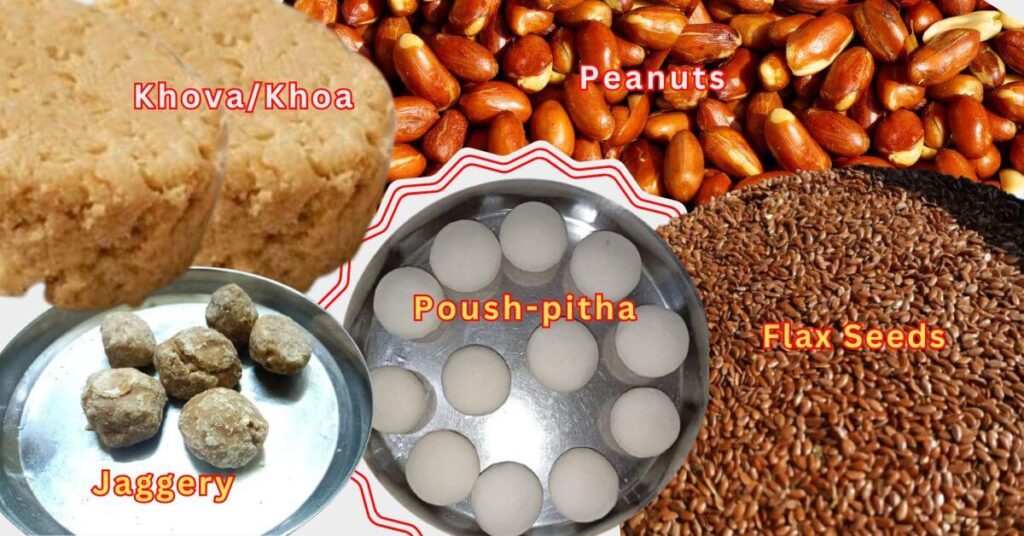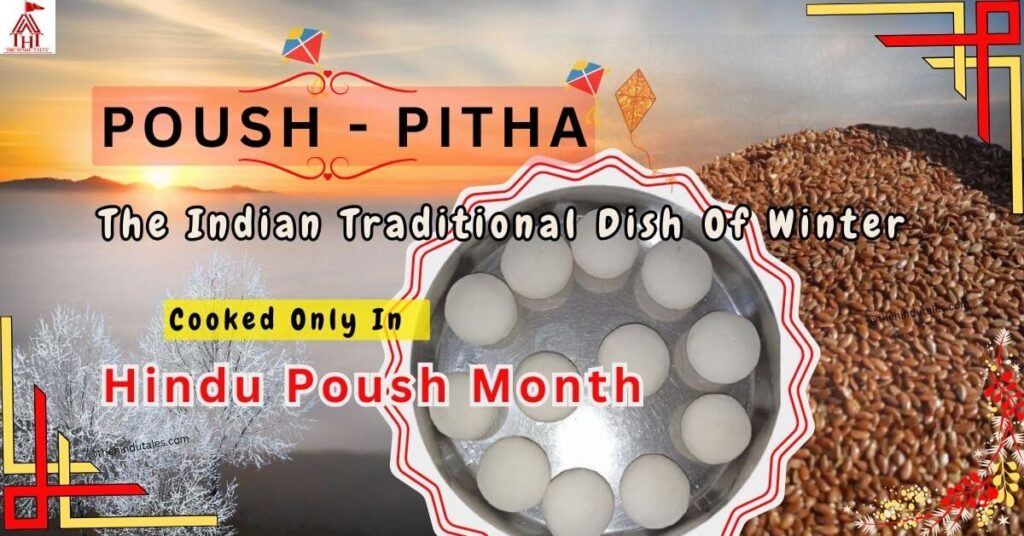Introduction
In mid-December when the whole world is counting down the remaining days of the year and waiting for Christmas and the New Year wholeheartedly, I am busy arranging materials for ‘Poush-Pitha’. Where the outdoor market is filled with colorful cakes of many flavors loved by this generation so much, my mind is lost somewhere in the hypothetical tastes of varieties of Poush-pitha stuffed with Khoa (condensed milk), Tisi (Flax seeds), Gud (Jaggery), Coconuts, Peanuts, and,……Oh ho ho! I can’t stop my mouth watering anymore while uttering the names.
And, I am sure you are also super excited to taste the Poush-Pitha, the single bite of which can delight your mood. However, if you haven’t tasted it till now I just can feel pity for you as you missed the most delicious food of winter (I assume it is not less than sweets) that is cooked in winter and just in the month of ‘Poush’ only.
But, don’t feel regretful as the ‘Poush’ month has not ended and you can taste it for yourself and your family even right now. So don’t wait a minute more and learn everything about Poush-pitha – the recipe, types, history, cultural impact, and many more with me in this beautiful article below.
What Is Poush-Pitha?
Poush is the name of the tenth month according to the Hindu calendar that falls between mid-December and January of the Gregorian calendar. In this month, a unique variety of rice named ‘Arwa’ is harvested. Therefore people celebrate this harvesting with a variety of dishes and offer the dishes first to their deity as a thanksgiving.

The Arwa Rice has a unique distinct flavor and aromatic taste, making it special. The rice when transformed into flour (We call it ‘Chauratha’ after transition), becomes the essential element of Poush-pitha and is used for making the age-old traditional dish of India.
How Poush-pitha is made? – The Recipe
The Poush-pitha looks like the white Rasogulla of Bengal, but it is not. So, I will suggest you don’t think of swallowing it at once. Because, unlike Rasogulla, it is not as soft as the sweet, and one more thing you will miss is the taste of amazing fillings inside the baked dough. So, bite it, chew slowly, and experience the aromatic taste of it.
Poush-pitha is made of Arwa rice flour with a variety of stuffing inside. It can be prepared in a variety of ways in different flavors. The making of it involves three steps – Preparing fillings, Making Doughs, and Boiling or steaming.
Preparation of Fillings
Preparing the fillings is the first step in making Poush-pitha. You can prepare different kinds of stuffings depending on your choice of taste and flavors. Khoa & Tisi (flax seeds) stuffing is a favorite of mine while the Gud-badam (Jaggery-Peanut) & Coconut stuffing is the most common in my house.
Khoa Stuffing – It is super easy to prepare as you only have to mix sugar in the Khoa and your stuffing is ready.
Tisi Stuffing – Tisi is known for its various health benefits. Moreover, the consumption of Tisi is also beneficial in winter especially as it helps to maintain your body temperature and keeps your body warm. To make Tisi stuffing, fry lightly, grind the seed coarsely, and mix jaggery.
Gud Badam Stuffing – Fry Peanuts, Grind them coarsel,y and mix jaggery powder into them and your Gud-badam stuffing is ready.
Preparing the dough
The dough preparation is the most crucial skill, and I almost failed in it. You need to knead the dough in such a way that it is neither too soft nor too hard. To make dough, take fresh Arwa Rice flour in a vessel, put a little hot water into it, mix it well, and make dough.
Now shape the dough like a bowl and put fillings inside it, pack it from all sides, and round it like a ball. Now, it is ready to be cooked either by steaming or boiling.
Boiling/Steaming
This is the final stage when you put stuffed row Pitha-ball for cooking. There are two ways to cook it: boiling and steaming. You can boil the dough with water or milk for a few minutes and filter out the baked dough when cooked. Alternatively, It can also be baked through steaming like Idly or your street food Momos.
Benefits Of Poush-pitha
Apart from being just a traditional dish the Poush-pitha has many health benefits. The dish provides energy, improves digestion, strengthens bones and joints, improves immunity to fight colds, provides nutritional value, maintains body temperature & keeps the body warm, enhances mental well-being, etc.
Having the main ingredients as Jaggery, Milk and Milk products like Khoa provides overall nutritional support to your body in the winter and immunizes your body against cold. It keeps our body warm and helps to fight the winter.
Celebration Beyond Border: The Cultural Impact
Cooking poush-pitha in winter and especially in poush month is a long-celebrated custom that our ancestors practiced, followed, and carried forward to us. If you have ever visited Jharkhand, Bihar, and Bengal, you will have this wonderful idea that cooking Poush-pitha in these regions is like a feast in the family and the whole family prepares and eats it with so much interest. They even distribute this seasonal dish to their relatives, known, and acquaintances when it is prepared for the first time in the season.
In Bengal, it is famous as Dudh Puli (a kind of Poush-pitha) that is specially cooked on the occasion of Poush-Sakranti (The Bengali version of Makar Sankranti). In contrast, in Assam, the various other types of it are prepared on the special occasion of Bihu. The dish is common even in Bangladesh because of its rooted cultural identity and history with India.
Conclusion
Poush-Pitha is a traditional Indian seasonal dish that is served not only in India but abroad also. Therefore, the dish has a global recognition and has a unique identity. However, it is unfortunate that by the time this age-old customary dish of India is losing its glitter even in India because of urbanization. The people in metropolitan cities barely know these things and are mis-understood as ordinary food without knowing its significance.
Therefore, if you are someone learning about this customary dish for the first time through my blog, discuss it with your parents, and elders and celebrate this tradition with joy. It should be our duty to connect back with our rich cultural heritage and preserve it for sustainable growth with modernity.
FAQs
Q1. Which state is famous for Poush-pitha?
Ans. Poush-pitha is a traditional dish of India which is famous in several states of India. It is loved in the states like Assam, Bihar, Bengal, etc. and is an integral part of their cultural tradition and imparts unique value to the Inidain socie
Q2. Why do Bengalis cook Pitha on the occasion of Poush-Sankranti?
Ans. Cooking Poush-pitha on the occasion of Poush-sankranti, is an integrap part of Bengal’s tradition. Therefore, people cook different kind of Poush-pitha on Poush-sankranti, and eat together.


